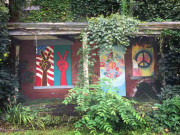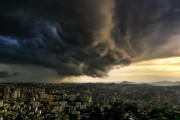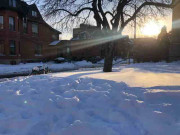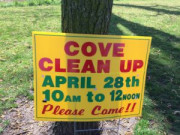Common(s) in Science and Technology? Dispatches from the SEEKCommons Network
This is the Introduction post to our new SEEKCommons series. The posts in this series are forthcoming, and will be linked here in this Introduction as they are…
This is the Introduction post to our new SEEKCommons series. The posts in this series are forthcoming, and will be linked here in this Introduction as they are…
In 2022, I was conducting my doctoral dissertation research on data-driven, automated digital farming technologies (drones, autosteering, sensors, GIS, smartphones, Big Data) in Turkey. Amidst the glo…
The AMOR MUNDI Multispecies Ecological Worldmaking Lab transpires as a collaborative space for emerging scholars, artists, scientists, and practitioners of all kinds working in the Global South with…
The allure of the onion Fieldwork can produce odd obsessions. As an anthropologist studying agrarian risk economies, mine was onions. In the central Indian region of Malwa where…
By Maycon Melo and Barbara Arisi In Brazil, a group of hunters killed a black jaguar. Not satisfied with the crime of killing an endangered animal, they made a video…
Yunlin is a coastal county in Western Taiwan famous for its agricultural produce, also known as “the barn of Taiwan.” However, the exchange value of agricultural produce has…
Is access to water a right? Should water be free? Have you ever stopped to ask yourself that? This is exactly what surrounds the discourse of water use…

A vacant house in Wilkinsburg, PA, is reclaimed by vines and artists. Photo by Noah Theriault, 2017. Anthro{dendum} welcomes guest contributors Noah Theriault and Alex Nading. Noah is…

Here’s what I imagine could–and should–emerge from this viral nightmare. Locally, stranger-neighbors will (re)discover each other. Re-appreciate the bonds of co-residence. …

Storm clouds over Minas Gerais. Photo by Mariela Guimarães (Pedro Rocha Franco and Jefferson Delbem 2020). The January 2020 floods in Minas Gerais, Brazil were catastrophic for the…

It’s dangerous to write and post when you have the flu. But I have been housebound since Friday and although my physical body is nowhere near ready to…
Image 1: Groin in Oceanside California, built in 1961. Photo: Ryan Anderson, 2019. Growing up, I always imagined the beach to be a natural place. I think it’s…
In elementary school, the first “robin red-breast” of spring signaled warmer days, colorful flowers, and a promise that the school year wouldn’t last forever. I considered robins m…
What can an anthropologist (who specializes in humans) learn from an unlikely species (like a goose)? Plenty, it turns out. My husband and I went goose-banding the other day,…
When I first started teaching an environmental anthropology class several years ago, I wanted students to develop group projects that could potentially address some local environmental problem or…
[This week we present excerpts of an interview with Valerie Olson conducted by Lisa Messeri focused on Olson’s new book, Into the Extreme (U Minnesota P, 2018).…
By: Elena Parmiggiani, Helena Karasti, Karen Baker, and Andrea Botero The environmental sciences have been a fertile ground for the development of scientific infrastructures (a.k.a. cyberinfrastructur…
During the week of Easter, the beaches of the Dominican Republic were converted into billboards for the campaign to stop the consumption of parrotfish. Pictures taken from drones…

The curse of the anthropologist: finding culture everywhere in nature. Today, the neighborhood in which my husband and I now live hosted a cleanup in a nearby cove.…
Around Tioga, a small town in northwestern North Dakota, huge tractors, seeders, and sprayers lumber along the shoulders of the highways in spring. In midsummer, sunflowers turn yellow;…

By Priya Chandrasekaran, Taylor C. Nelms, Valerie Olson, Elizabeth Reddy, Heather Thomas, and Nicholas Welcome At the annual meetings of the American Anthropological Association in late 2017, a…